Growing and Harvesting Asparagus: A Guide to Enjoying This Delicious and Nutritious Spring Vegetable
Asparagus is a delicious and nutritious vegetable that can be grown in your own backyard. With proper care and attention, you can enjoy a bountiful harvest of tender and flavourful asparagus spears. You can grow asparagus in relatively little space (we have ours in a 4’ x 4’ raised bed) and very little maintenance. The key to getting started growing asparagus is patience. In this article, we will guide you through the process of growing and harvesting asparagus, from preparing your garden to preparing it in the kitchen!
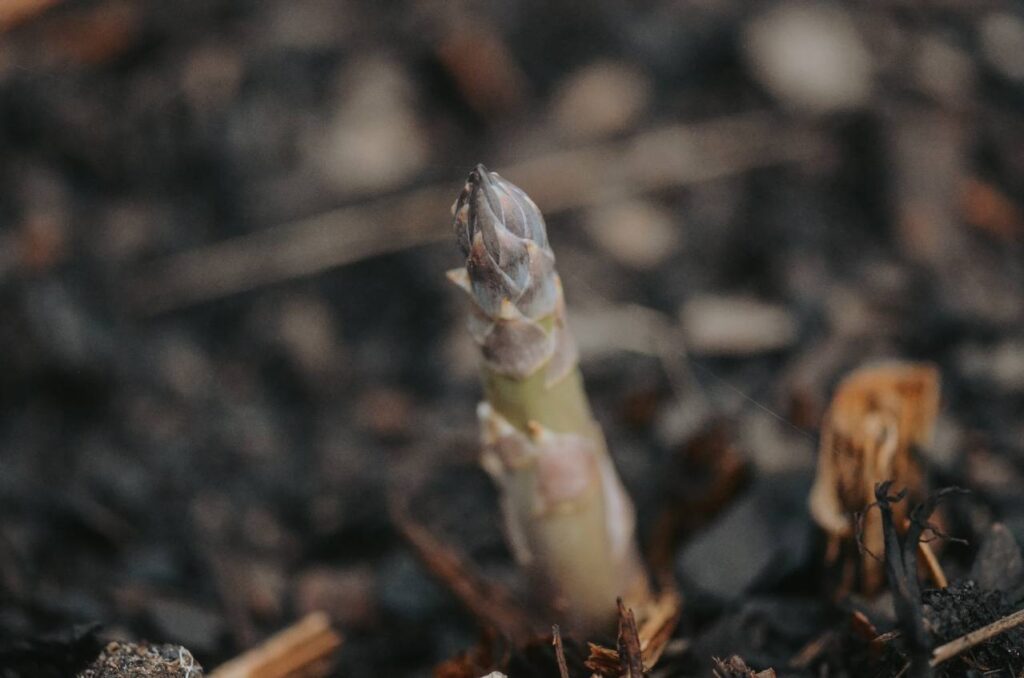
Planting Asparagus
Choose a sunny spot with well-draining soil for your asparagus bed. Plant crowns or seeds in the early spring or fall, spacing them 12-18 inches apart. Water well and keep the soil consistently moist during the first growing season, but not too much overwatering can cause rot or disease.. Asparagus grows well in a raised bed so that’s an option if you don’t have much space. One benefit of the raised bed is that it’s easier to keep weeds away (fewer seeds seem to blow in), but you’ll want to make sure they don’t dry out quickly as raised beds tend to do.

Caring for Asparagus
We started our Asparagus from seed. You can grow yours from seed or purchase crowns to plant. Asparagus requires regular watering, fertilizing, and weeding. Mulch around the plants to retain moisture and suppress weeds. In the second year, apply a balanced fertilizer in the spring and again in the summer. You’ll want to make sure that you DO NOT harvest any asparagus your first year. It can be frustrating but think of it as helping to ensure that you’ll have more bountiful harvests and healthier crowns for the next 10+ years. It’s a good trade-off.
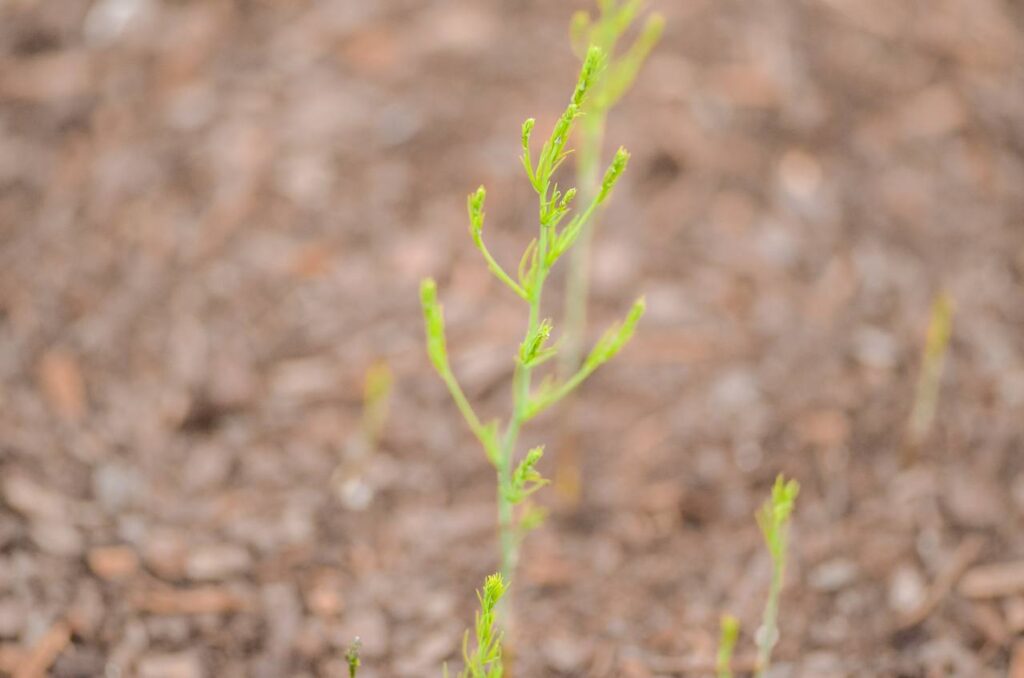

Harvesting Asparagus
As we just mentioned, you’ll not want to harvest spears your first year. Let the spears grow and allow the crowns to become well-established. Starting the next growing season, the asparagus is ready to harvest when the spears are 6-8 inches tall and thick as a pencil. We cut the spears at the base with a sharp knife or you could also snip them off with scissors but a knife is a bit easier to clean. Our asparagus starts to become ready to harvest in mid-April (we’re in Eastern US Zone 7A) and we will harvest through July 1. After July 1, we quit harvesting and let all of the remaining spears continue to grow.
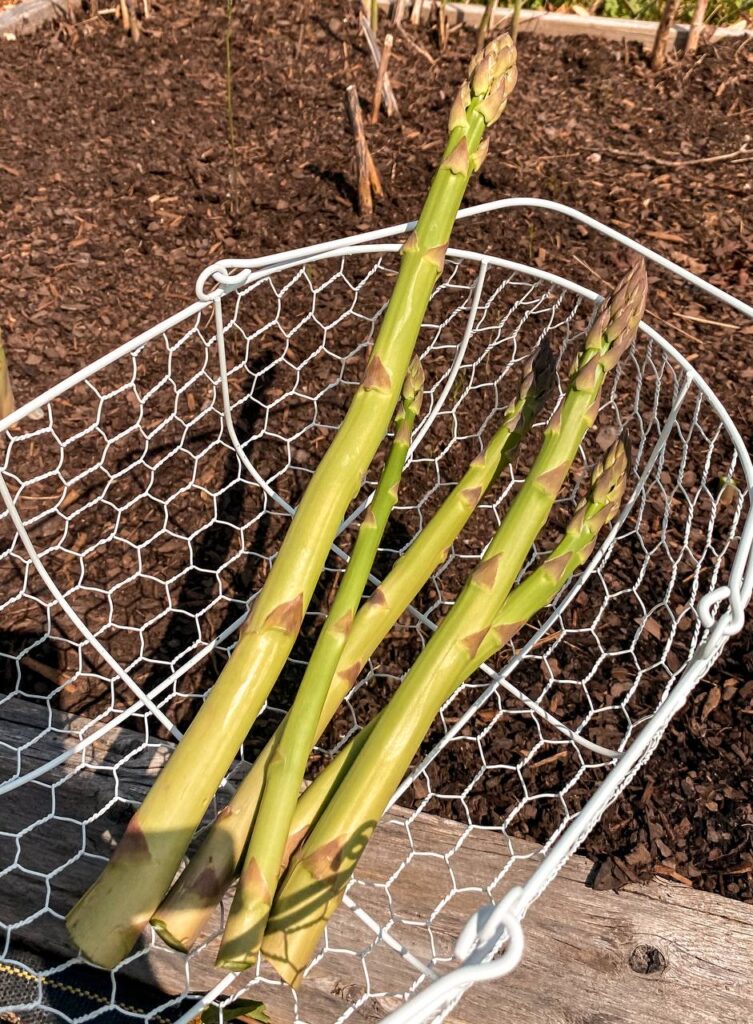
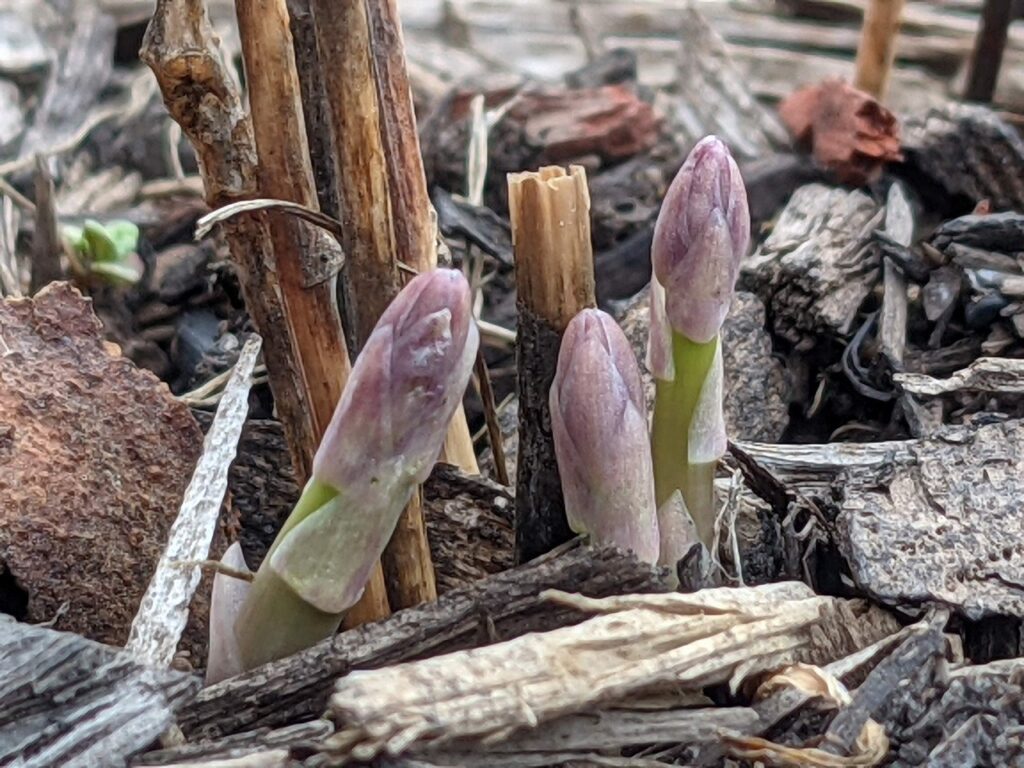
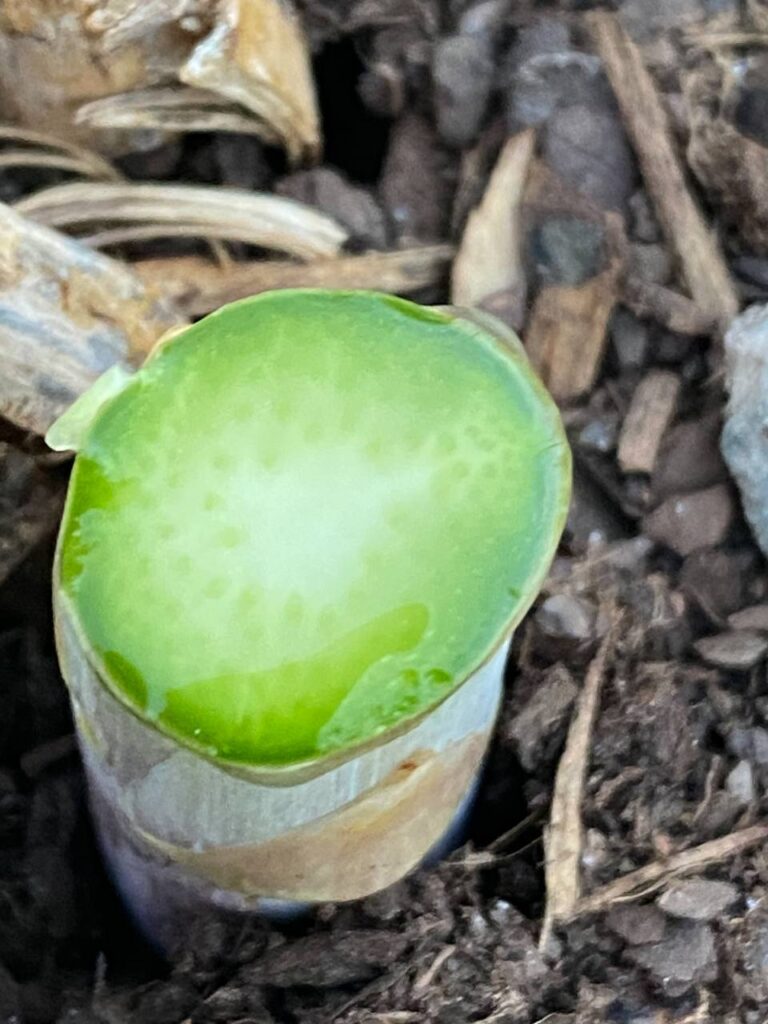
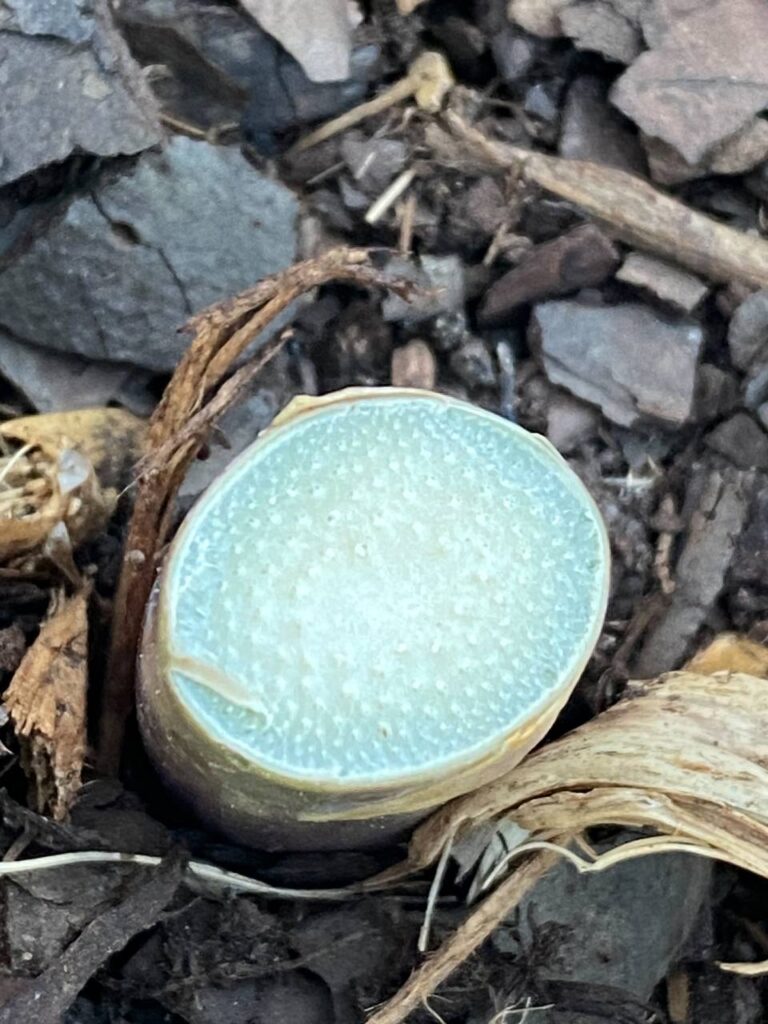
Enjoying Asparagus
Enjoy your freshly harvested asparagus steamed, roasted, grilled, or sautéed. It can be added to salads, soups, or pasta dishes for a burst of flavor. Our favorite preparation is to cut up the spears into appx. 1” chunks and fry them in olive oil, onions (or onion powder), garlic, herbs and salt and pepper. After 10-12 minutes of frying at medium heat, the asparagus should be fork-tender and just about melt in your mouth.
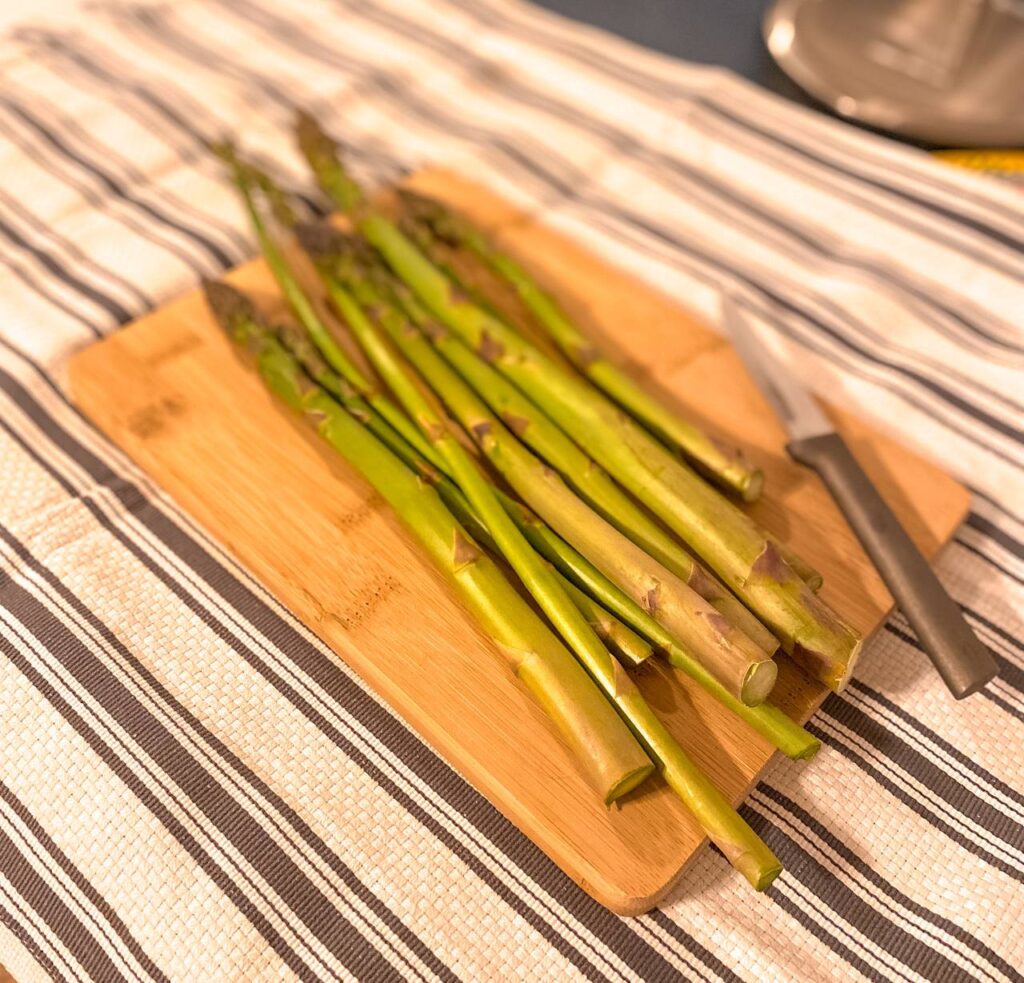
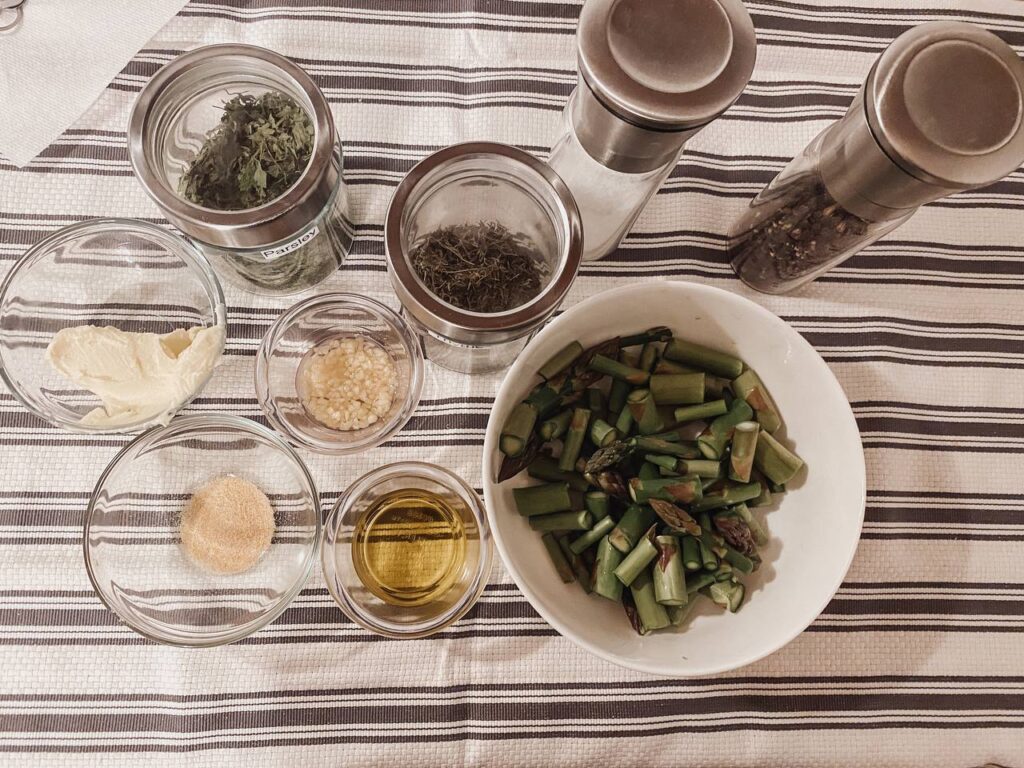
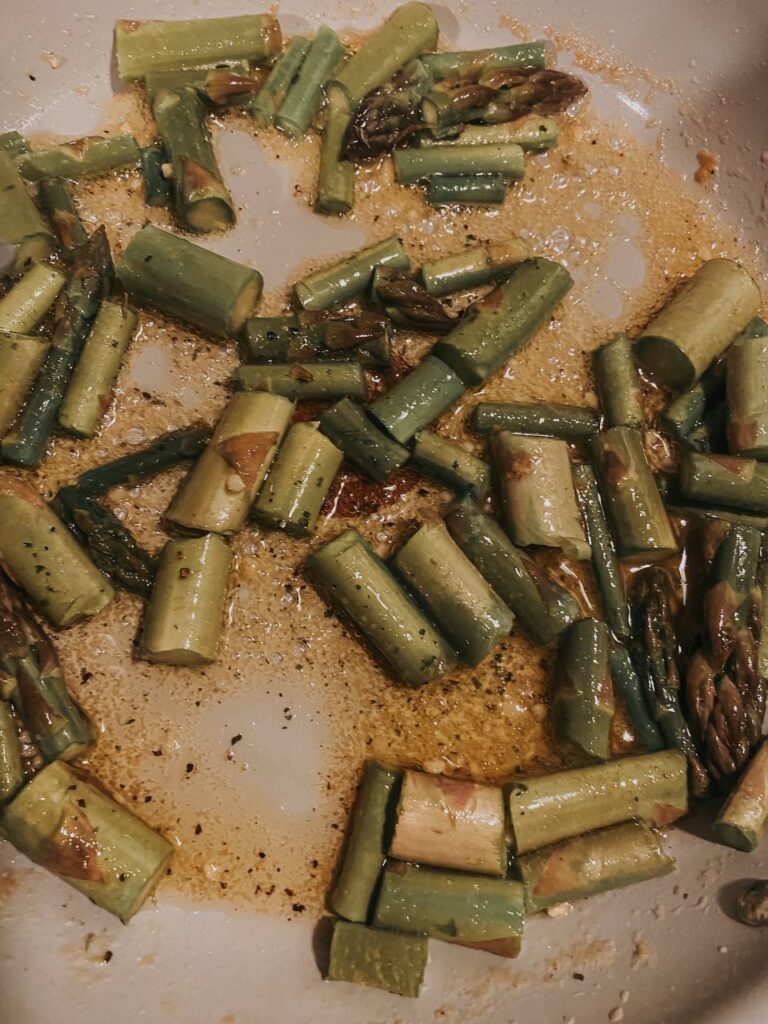

Growing and harvesting asparagus is a rewarding experience that provides a delicious and healthy addition to your meals. With proper care and attention, you can enjoy a bountiful harvest for many years to come. Happy growing!


